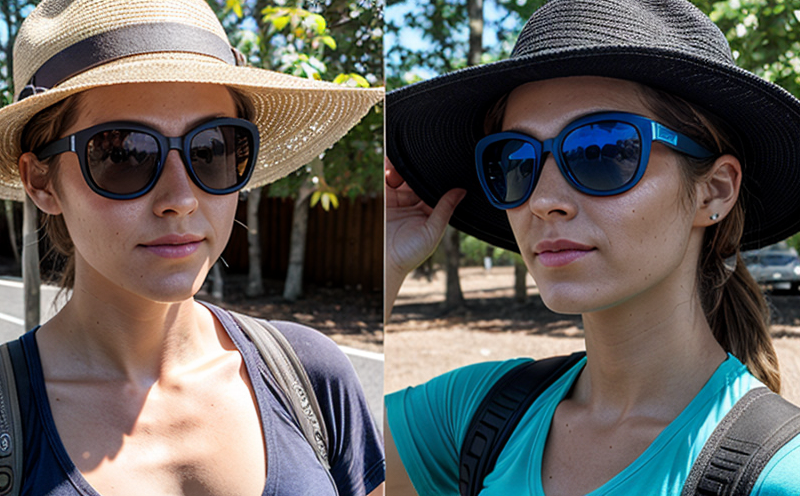DIN 67502 Determination of UV resistance in protective fabrics
The DIN 67502 standard is a crucial tool used by industries to ensure the durability and safety of protective fabrics against ultraviolet (UV) radiation. This service plays an essential role in safeguarding workers exposed to intense sunlight, particularly those in sectors such as construction, agriculture, healthcare, and military operations.
The method described in DIN 67502 focuses on assessing the UV protection factor of a fabric by simulating exposure to artificial light sources that mimic solar radiation. This allows for an accurate determination of how well the material can block harmful UV rays from reaching the skin. The test is conducted under controlled conditions, ensuring repeatability and reliability.
The first step involves preparing the specimens according to the specified dimensions outlined in DIN 67502. Typically, these are cut into standard sizes that allow for consistent measurement throughout testing. Specimens must be preconditioned before testing to ensure they are at a stable state, reflecting real-world conditions accurately.
Once prepared, the specimens undergo exposure to UV radiation using specialized equipment like xenon arc lamps or other sources designed to replicate solar UV spectra. The intensity and duration of the exposure are carefully controlled to simulate typical working environments where fabrics might be exposed to prolonged sunlight.
The effectiveness of the fabric in blocking UV light is measured by comparing the transmitted UV radiation before and after the exposure period. This comparison provides a quantitative measure of the UV protection factor (UPF), which indicates how much UV radiation is blocked by the fabric.
Understanding the results involves interpreting these UPF values, which can range from 15 to over 50+, depending on the fabric's composition and construction. Higher UPF values correspond to greater protection against UV rays, making this test critical for developing high-performance protective clothing.
The DIN 67502 standard also emphasizes the importance of consistent testing protocols to ensure that results are comparable across different laboratories. This consistency is vital in maintaining quality standards and ensuring that products meet regulatory requirements for worker safety and health.
By adhering strictly to the procedures outlined in DIN 67502, textile manufacturers can produce fabrics with superior UV protection, enhancing the safety of workers in high-risk environments. This service not only meets industry standards but also contributes significantly to improving occupational health and safety practices globally.
Industry Applications
| Industry Sector | Application Scenario |
|---|---|
| Construction | Protective clothing for workers exposed to prolonged sunlight during outdoor tasks. |
| Agriculture | Durable coverings and protective gear for farmers working in sun-exposed fields. |
| Healthcare | Surgical gowns and other personal protective equipment (PPE) for healthcare workers. |
| Military Operations | Camouflage clothing and gear designed to protect soldiers from UV exposure. |
Customer Impact and Satisfaction
The demand for protective fabrics that offer superior UV protection is increasing as awareness grows about the risks associated with prolonged sun exposure. Customers, particularly in high-risk industries, rely on this service to ensure their products meet stringent safety standards.
By providing accurate and reliable testing results, we help customers enhance product performance and compliance with international regulations like DIN 67502. This leads to higher customer satisfaction as they can trust that the fabrics produced will effectively protect workers in various environments.
We also assist customers in optimizing their production processes by identifying areas where improvements can be made to increase UV protection. This collaborative approach ensures that our clients stay ahead of industry trends and regulatory changes, ultimately improving overall product quality.
Environmental and Sustainability Contributions
- Reduces waste from non-compliant materials by ensuring only high-performance fabrics enter the market.
- Promotes the use of sustainable practices in material selection to enhance durability and UV resistance.
- Contributes to worker safety, which indirectly supports environmental health and reduces incidents that could lead to increased resource consumption for recovery or treatment.





